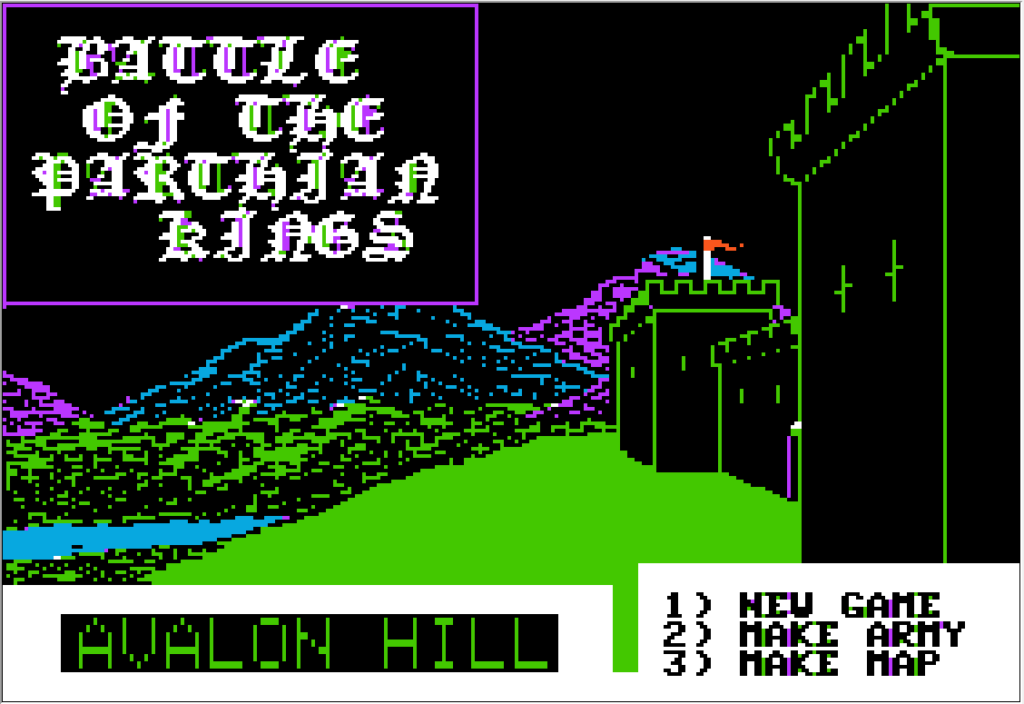
In May of this year, I covered Parthian Kings, the first game by David W. Bradley who would later be known for Wizardry IV and for making a fool of himself in interviews. The game interested me enough that I played two games in solo mode (first, second), and pondered whether to test it in multiplayer. Well, I did it.
This AAR assumes you have read the previous articles, but as a recap, Parthian Kings belongs to what I call the Fantasy Realm Strategy genre. Each player starts with a castle and some cash, and must build an army to either destroy all their rivals or win on points after a pre-determined number of turns.
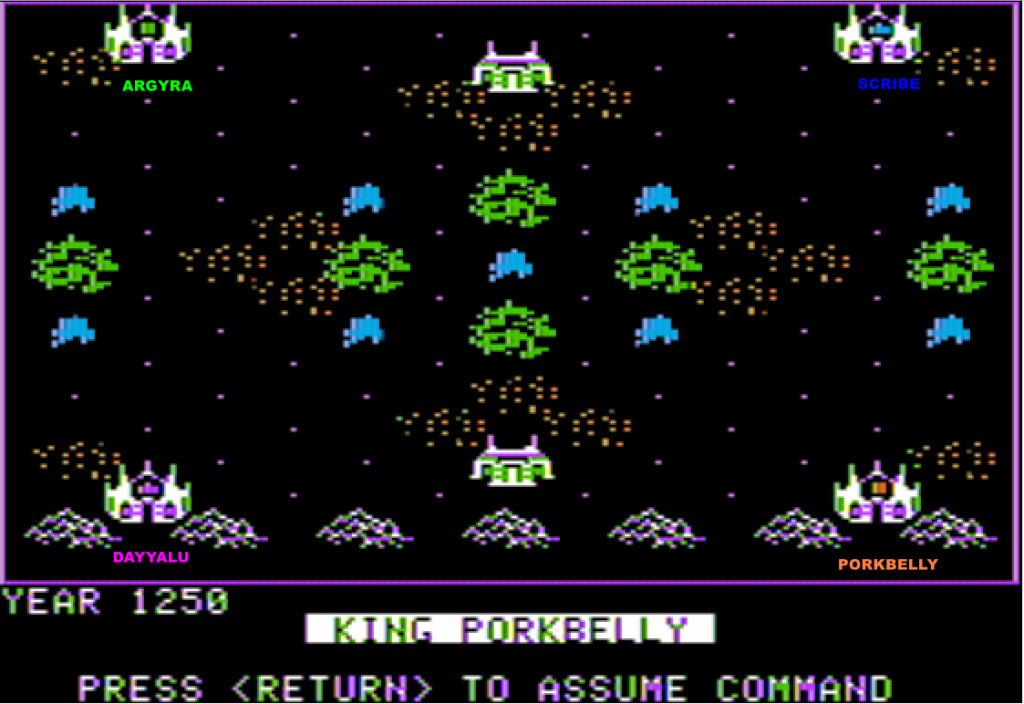
For this game, I will face Dayyalu (back-to-back champion of The Dark Forest and Dreadnoughts), Argyraspide and Porkbelly. The game will last 15 turns on a simple but balanced map. Each of us starts in a corner of the map, with two neutral cities in the middle.
The first thing to do in Parthian Kings is to create your unit template: name & stats. Porkbelly chooses an orc theme, Dayyalu an undead theme and Argyraspide a Macedonian theme. I try to mix fantasy and Macedonia with a “Greek Mythology” theme:
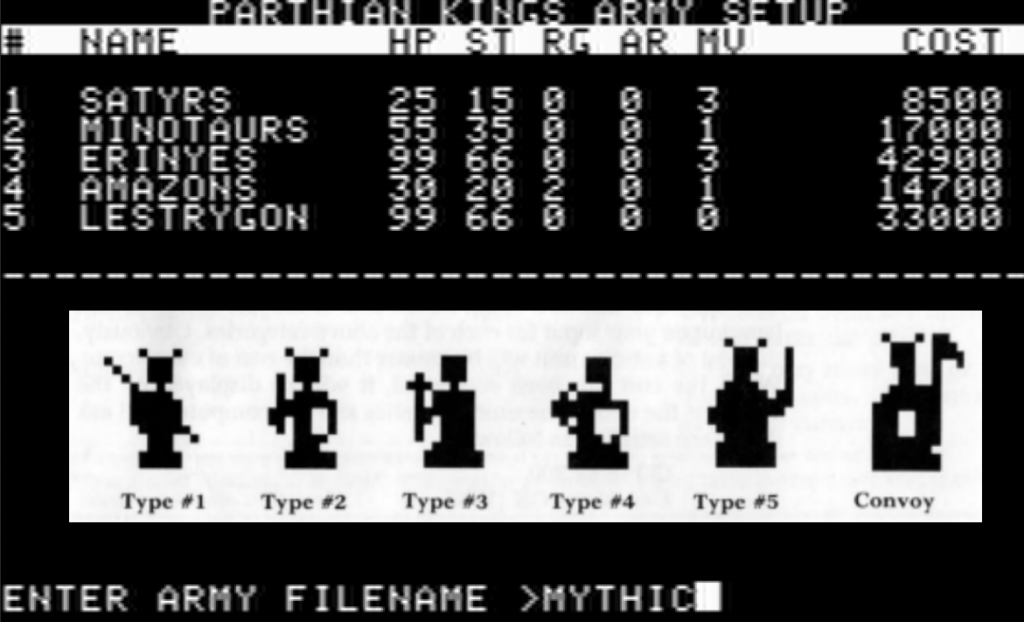
Parthian Kings lets you assign any icon or name to any unit. We didn’t want everyone to call their most powerful unit “goblin”, “street urchin” or “basic skeleton” to confuse the other players, so we added the house rule that icon shape & name must fit strength and function.
My five units will be:
- The satyr, weak but cheap and especially very fast to occupy the lakes – the only way to gain points besides taking the capital of another player,
- The minotaur will be my workbull. Small, moderately strong – designed to hold the ground but not to take it,
- The erinye, my shock unit. Extremely expensive, it has the best raw stats AND the best mobility possible,
- The amazon, my one unit capable of ranged attack, otherwise slow and barely stronger than a satyr. Overall, I find that ranged units are too expensive, but you never know.
- Finally, the lestrygon is as strong as an erinye… but incapable of movement – which allows me to reduce its cost by 30% over the latter. It will only be used in garrison, or transported in convoys.
Since it is pretty hard for people not in my head to know what’s stronger between a minotaur, an erinye and a lestrygon, I inform the other players that the erinye is my fast-moving shock units. The other players also flag their strongest and weakest units.
1250-1251: Opening
My initial plan was to ignore the central and focus exclusively on the lakes. Ideally, a powerful Argyraspide would mostly placate Dayyalu while I would accumulate points. I don’t expect 15 turns to be enough for the economic advantage to compensate a slow start in points.
My plan is immediately shattered when I see Argyraspide’s initial deployment – a perk of playing last:
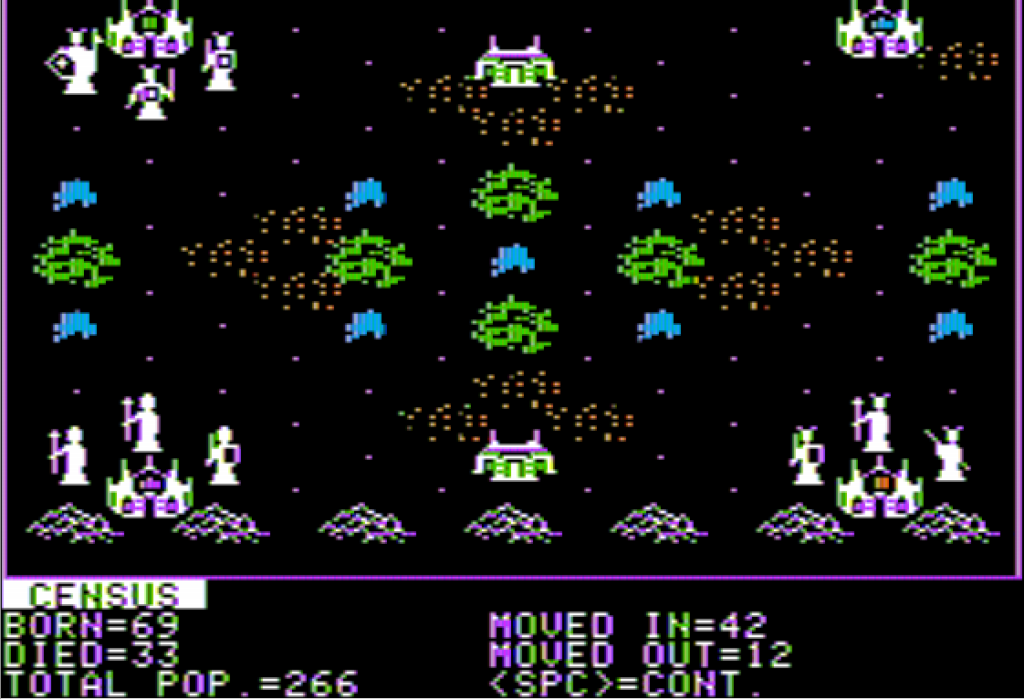
Argyraspide deployed a Tier #2 unit close to the neutral central castle, and a Tier #5 unit South of his castle. This means he is probably planning to attack South rather than East, and that the neutral castle should be easy for me to take.
Great! Change of plan! I buy two satyrs to occupy the two closest lakes and pour the rest of my money into as many erinyes as possible. I am going for the central castle!
Much to my surprise, the turn resolution shows me that Argyraspide is going East after all:

Not a reason for me to change my plan! Next turn, my erinyes will arrive before Argyraspide’s high tier units and will fight with a defensive advantage (Argyraspide’s Tier 2 units will either be crushed if there are a few of them, or beaten if there are a lot of them, but then it means that Argyraspide won’t have a lot of Tier 5 units after that).
The turn resolution happens exactly as expected, my erinyes beat a unit of “hoplites” and another one of “companions”.
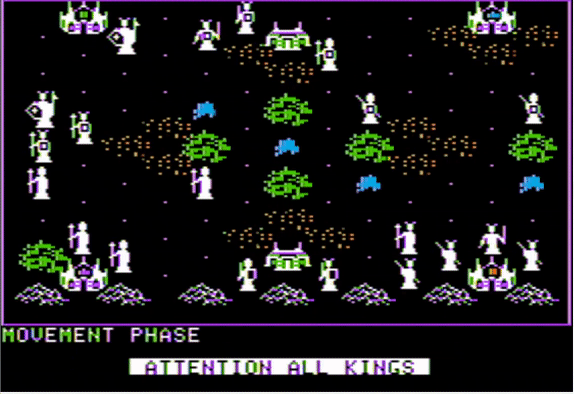
By the end of 1251, I am the proud owner of a second castle. My revenue soars and I am confident I can win this.
1252 – 1255: The Feud for the Lakes
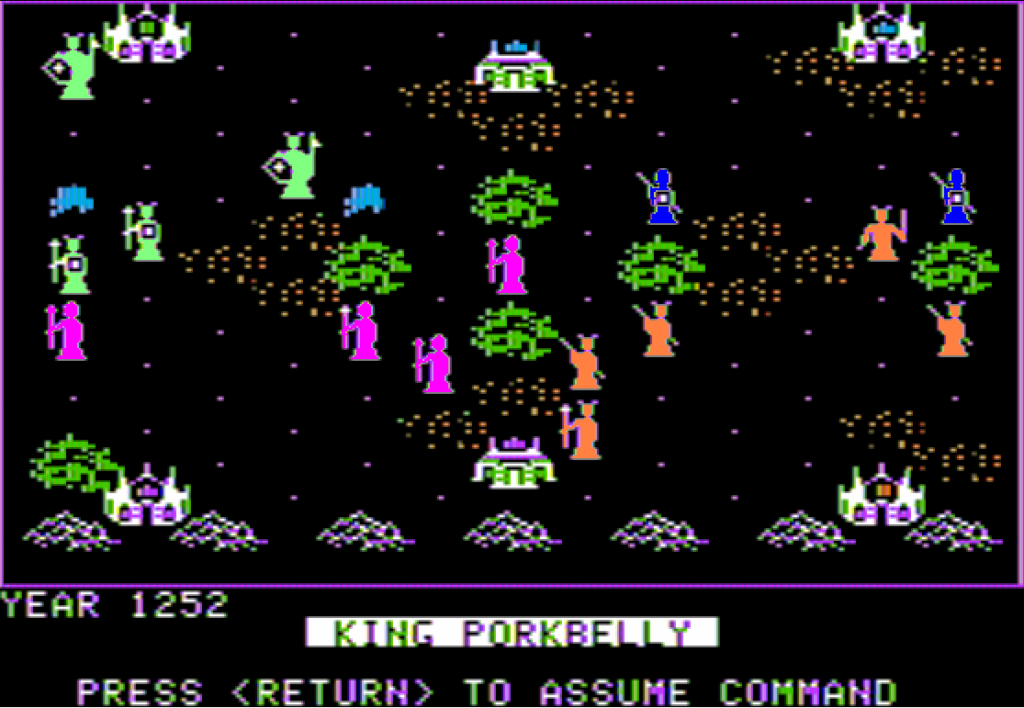
After having captured a second castle, the new focus of my attention is Porkbelly’s Tier 5 unit (called Uruk-Hais, but I don’t know that yet) that has just moved into my quadrant. I am unsure as to whether Porkbelly is going to try an early KO by beelining for my castle, or whether he is just going to try to harass the satyrs currently occupying my lakes.
Happily enough, I have a magician. In Parthian Kings, magicians start with a low level in magic, only able to cast, once per turn, two rookie spells: Materra and Nosterra.
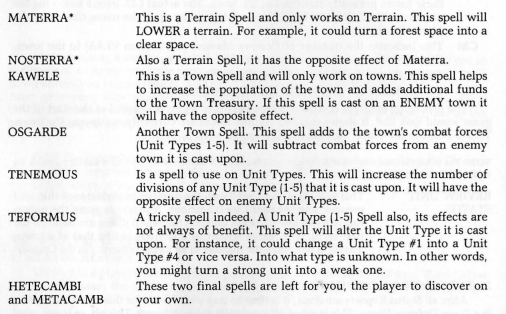
It was not quite planned, but I trained my magician by telling her to cast Nosterra, which makes the target terrain harder (clear becomes rough, rough becomes forest, …). This surrounded my starting castle by a ring of rough terrain, which will take one turn for Porkbelly’s Uruk-Hai to cross. I have the time to repatriate my erinyes to bolster my defence.
I immediately pass an agreement with Argyraspide: I won’t push further, and he leaves my castle alone. Free from pressure on my West, I bring back my erynies.
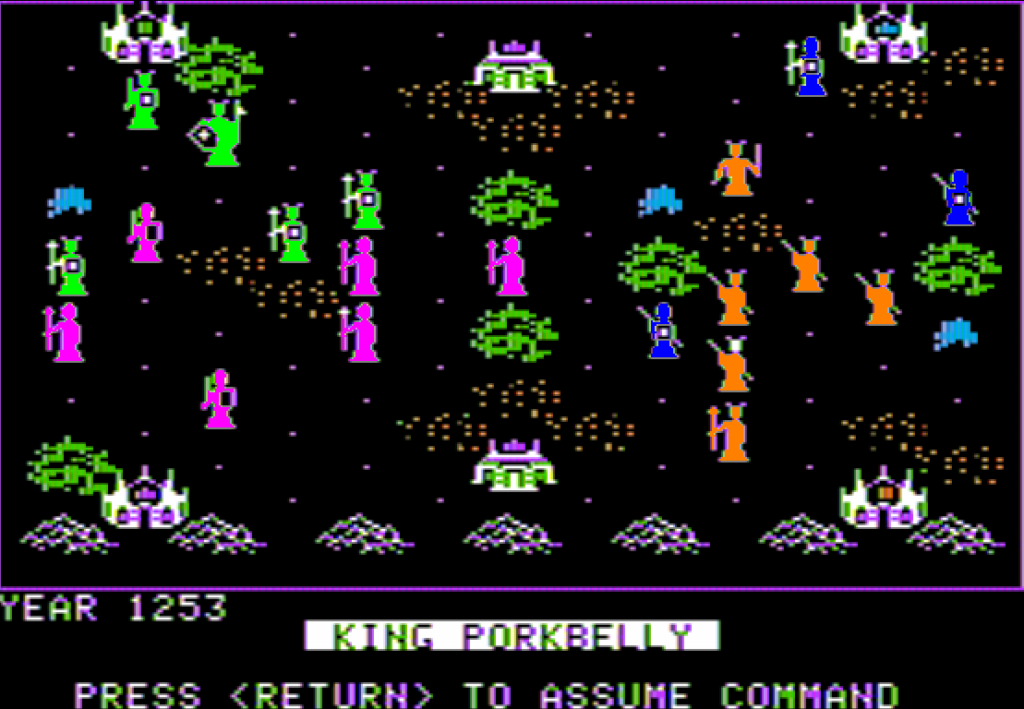
The following turn, the Uruk-Hais move away from my castle, from which I deduce they are not an existential risk. They are still irritating, particularly because they apparently can shoot, and they killed some of my satyrs at range – and I am still not sure how many of them there are. I can build more erinyes, but I can’t merge them with my existing one into a new unit in the field, so I spend one turn returning my active erinyes to my castle for a future super-stack. I also set aside some cash to recruit a couple more erinyes in my central castle and take the central lake from Dayyalu:
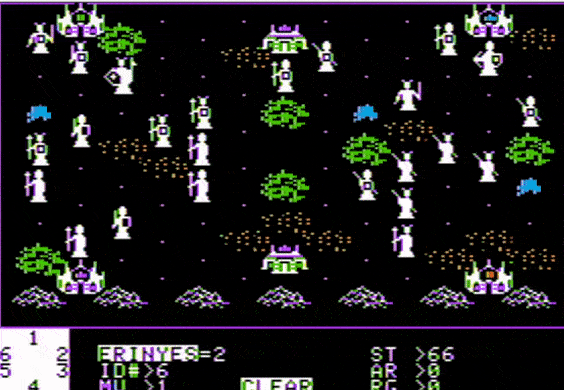
In 1254, I sortie my reinforced erinyes – those uruk-hai are dead. I am also worried about the situation in the West: Argyraspide is being seriously pushed back by Dayyalu. I send my central erinyes to put some pressure on Dayyalu where he least expects it.
The destruction of the Uruk-Hais goes as planned… as for saving Argyraspide, I may have acted too late:

The following turn, just as I triumph in the East by taking control of the 4 lakes, Dayyalu occupies Argyrapide’s castle!

Dayyalu now has 3 castles, while I have only 2 and Porkbelly only one.
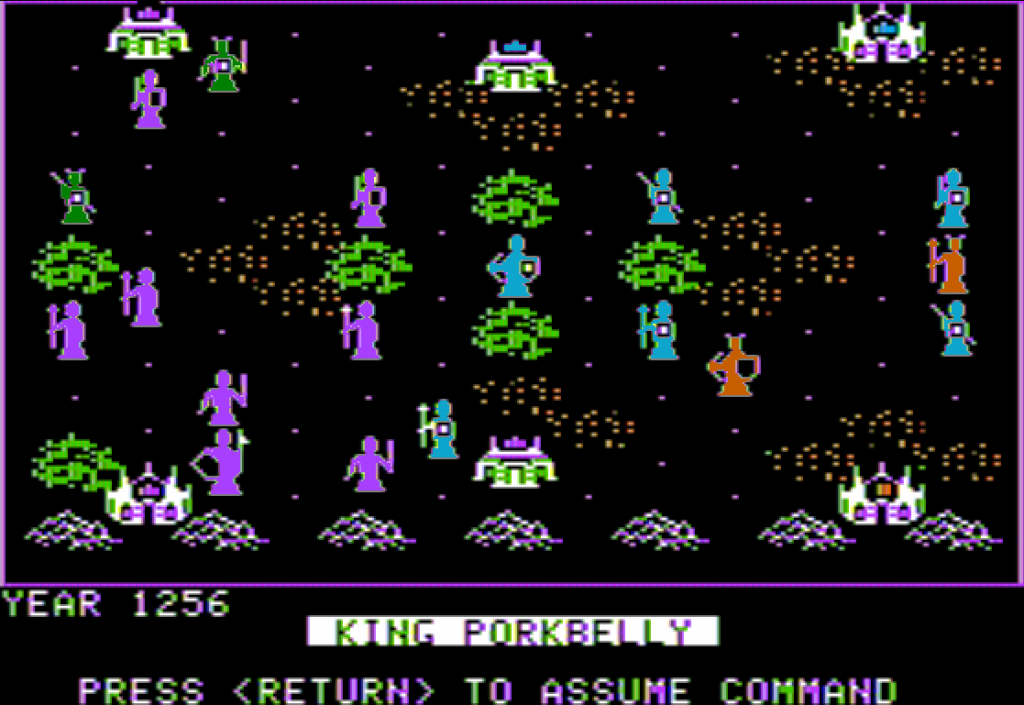
1256 – 1264: The undead horde
In any normal multiplayer game, Dayyalu’s dominance would create an immediate alliance between Porkbelly and myself.
Unfortunately, there is a catch. Taking an enemy capital gives a massive bonus in points, because you kill their king (+25 points), their wizard (+10 points) and their convoys (+2×5 points).

There is no way for either Porkbelly or myself to catch back 45 points with lakes alone, which means that we need to also take a Capital, and of course Dayyalu’s is going to be the hardest to take. Henceforth, I can’t trust Porkbelly, and he can’t trust me.
Still, getting points from lakes is more or less useless now, so I retreat from my Southern lakes to give Porkbelly some breathing space, and make sure he focuses on Dayyalu and not me. Meanwhile, I regroup my forces in my central castle.

The problem is that Porkbelly does not really use that breathing space to attack Dayyalu. He is happy to grab some lakes and aim for second place. Meanwhile, Dayyalu tells me he is happy with winning on points rather than wasting his advantage on an assault, and he starts surrounding one of my castles with troops. When he completes this operation, I will be unable to deploy troops from my castle!
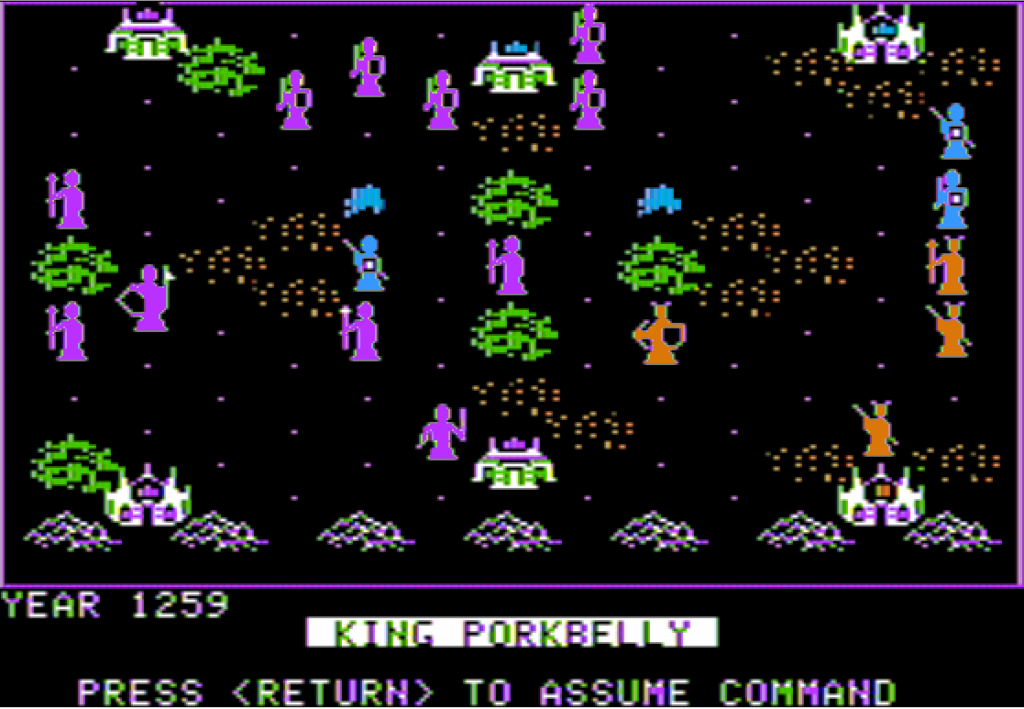
I need to act, and of course my only possible target for a decisive action is Porkbelly! I evacuate my erinyes currently in the central castle just before the siege is completed, and also create a convoy containing my wizard and more erinyes in my starting castle.
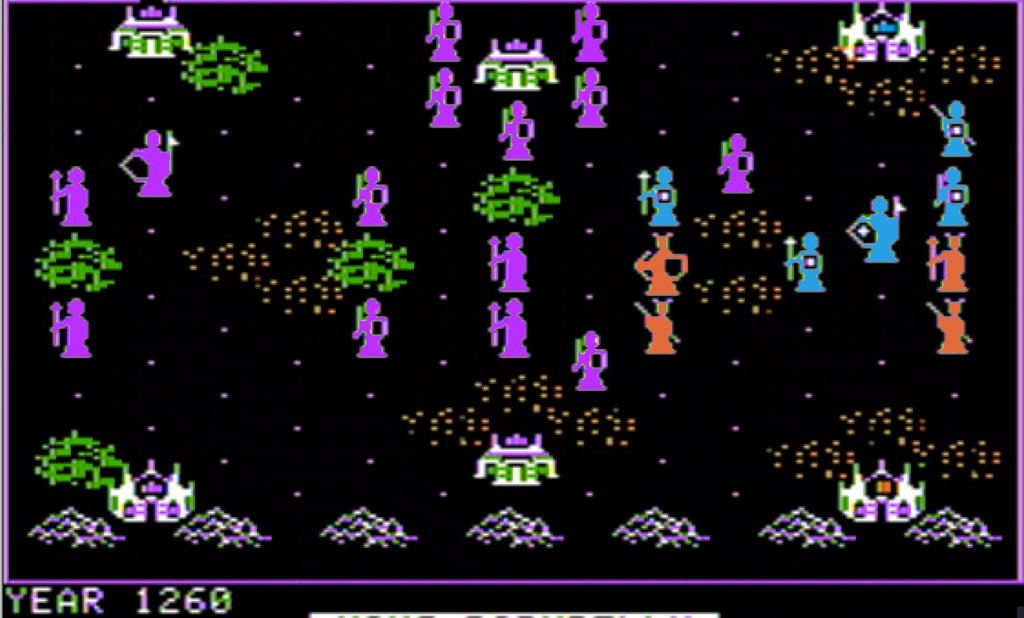
The plan is to deploy the erinyes from the convoy, and them have them cross 3 tiles and take the castle by surprise. The wizard is there to cast a “clear terrain” on the difficult terrain just above Porkbelly’s castle, so it would not stop me.
As I thought was likely to happen, Porkbelly answers to the threat by deploying an army of Uruk-Hais North of his castle. I had planned for that too: my magician will instead cast TEFORMOUS, which will transform the proud Uruk-Hais into something else.
Alas, my plan does not survive reality:

My plan was unlikely to succeed, and with the spirits on voicemail its failure is guaranteed. I pull back and retreat to my starting castle, while Dayyalu seizes my now defenceless central castle.

There is nothing else to do for me than to brace for impact. In the 4 remaining turns, Dayyalu tries to dislodge us, but even his mass of skeletons can’t break through either mine or Porkbelly’s defence. He wins, but without eliminating us:

Dayyalu ends the game with 109 points, more than 3 times what I have (33). It is still a “pyrrhic” victory; I suppose any result where you don’t eliminate your opponents is considered “pyrrhic” by the game.

Upon analysis, we reckon collectively that Argyraspide was crippled by his unit line-up:

Argyraspide had no cheap unit (10 700 gold for his cheapest unit, for 8 500 for my satyrs) and generally speaking overpaid for all his units with armour (armour is very expensive for, in our collective experience, no noticeable impact). The argyraspides (“Silver-Shields”) did not have enough movement (similar strategy to the one I had with the lestrigons), the slinger was a weak ranged unit. This left Argyraspide with only the companions as a good unit, but he barely used them after losing some in his initial clash against my forces.
Similarly, this is Porkbelly’s line-up:

Porkbelly also gave armour to all his units, overpaying them somewhat. His uruk-hais in particular were incredibly expensive (18K more than my erinyes) due to the combination of armour, mobility and range attack. Furthermore, between the slow tuskers and the onerous Uruk-Hai, I don’t think Porkbelly had units good at taking cities. I like the bold choice of adding ranged attacks on the squealers, though.
Meanwhile, this was Dayyalu’s line-up:

The cheapest unit was four times less expensive than Argyra’s hypaspists, and Dayyalu made the forgotten the cornerstone of his offensive. They were expensive, but taking a castle early on allowed Dayyalu to finance them. The two units did the trick, and Dayyalu barely used the last 3 units.
As for me, I feel that my satyrs did their job; even if they were expensive they consistently won the 1-1 match-up against the squealers and cultists, which helped me control the 4 Eastern lakes at some point. Similarly, the erinyes performed as expected. On the other hand, I found the minotaurs too slow to ever be useful, the amazons too squishy and lestrygons only useful after I had effectively lost the game.
It is one of the things I like best with playing old games – particularly in multiplayer – there is no meta, so each player must make the best assumptions about the game and roll with it. But if I played Parthian Kings more, unit creation would have gotten old pretty fast. I believe that armour is overpriced, that ranged attacks are rarely useful and that strength should always be set at the maximum (2/3 of the hit points). If we are correct, then unit creation is just about choosing the speed for your units and then a location on a power-price curve. I wish there were more options, in particular with a split in offensive/defensive value, as it is I really had to force myself to use more than 2 different units.
I believe the game was effectively over when Dayyalu mauled Argyraspide. Maybe, just maybe, I could have saved the situation by immediately attacking Porkbelly’s castle (I had no chance to take Dayyalu’s capital), but Porkbelly had barely committed his reserve by then, and I would most probably have failed. I feel that the victory points for taking a capital is just too massive: it makes lakes irrelevant, which make strategy unidimensional (capture castles), which of course benefits the players already having an economic advantage – for instance because they have just taken a capital. And of course, the same point system makes alliances against the leading player almost impossible to negotiate.
I have now played Parthian Kings in multiplayer and I understand why it receives rave reviews for its multiplayer mode given what was available in 1983. Still, its balancing issues are hard to ignore, and I don’t feel the multiplayer mode towers that much above the single-player mode. Unlike other multiplayer games I showcased here, I have no more desire to revisit Parthian Kings, even if I had the time. I will now return to covering new games.